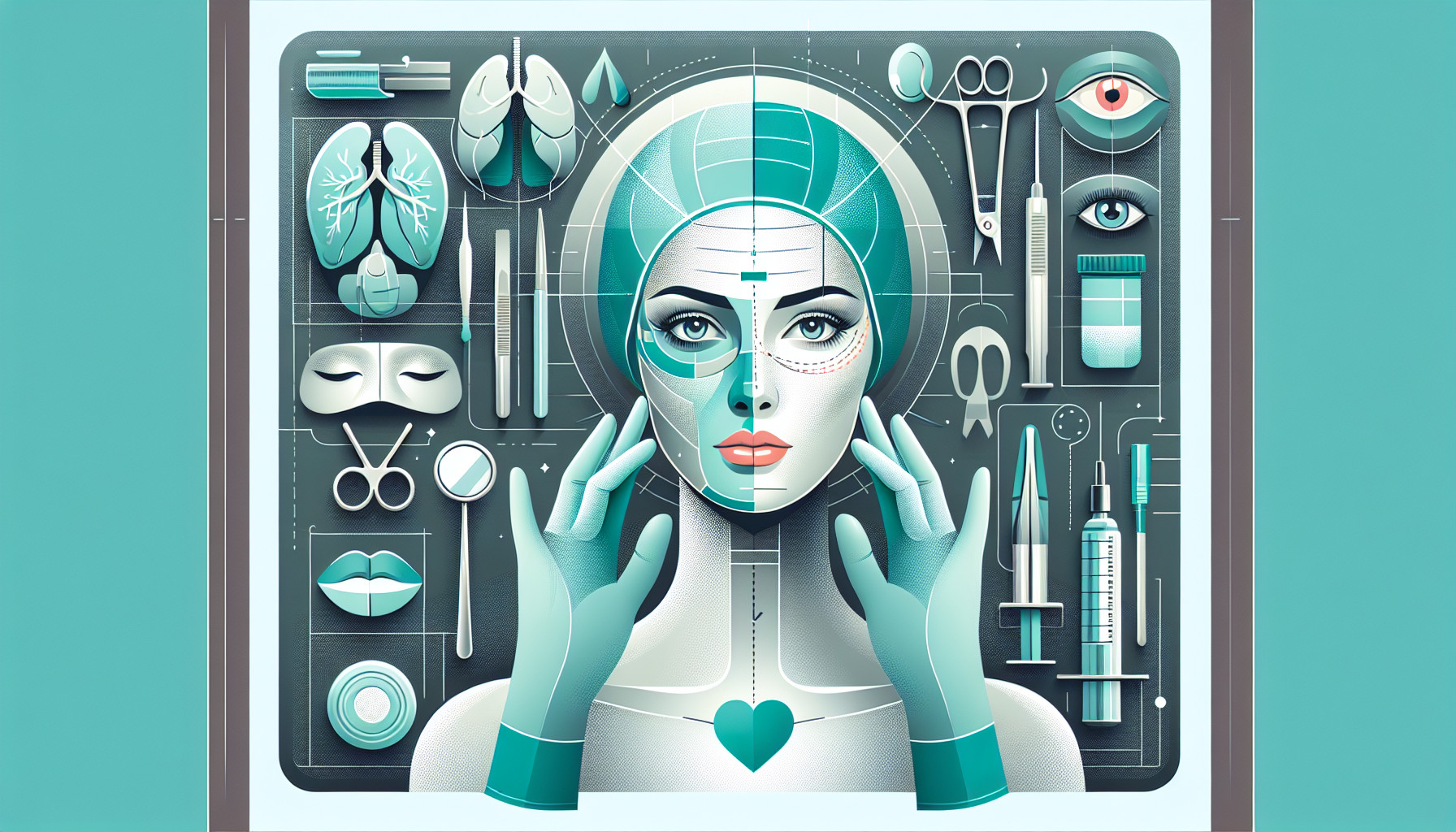Our Summary
The research paper seems to delve into various conditions related to aging around the eye area. These include Dermatochalasis, a condition where excess skin hangs down from the upper or lower eyelid; Lower lid malposition, which is an incorrect positioning of the lower eyelid; Steatoblepharon, a condition where fat protrudes in the upper or lower eyelid, and Tear trough deformity, a hollowing in the lower eyelid or upper cheek. The paper probably discusses the causes, symptoms, and potential treatments for these conditions.
FAQs
- What is Dermatochalasis and how is it related to blepharoplasty?
- How does blepharoplasty address lower lid malposition and tear trough deformity?
- What is Steatoblepharon and how can it be treated through blepharoplasty?
Doctor’s Tip
It is important to follow all post-operative care instructions provided by your surgeon, including avoiding strenuous activities and keeping the eyes elevated to reduce swelling. Be sure to attend all follow-up appointments to monitor your healing and address any concerns promptly.
Suitable For
Blepharoplasty is typically recommended for patients who are experiencing the following issues:
Dermatochalasis: Excess skin on the upper eyelids that can obstruct vision or create a tired appearance.
Steatoblepharon: Excess fat deposits in the eyelids that create puffiness or bulging.
Lower lid malposition: Drooping or sagging of the lower eyelids that can cause a tired or aged appearance.
Tear trough deformity: Hollowing or dark circles under the eyes that can create a tired or aged appearance.
Overall, patients who are looking to improve the appearance of their eyelids, reduce puffiness or sagging, and achieve a more youthful and refreshed look are good candidates for blepharoplasty. It is important for patients to have realistic expectations about the results of the procedure and to discuss their goals with a board-certified plastic surgeon.
Timeline
Pre-consultation: The patient notices signs of aging around the eyes such as excess skin, puffiness, or bags under the eyes. They schedule a consultation with a plastic surgeon to discuss their concerns and determine if they are a good candidate for blepharoplasty.
Consultation: During the consultation, the plastic surgeon evaluates the patient’s eyelids and discusses their goals and expectations for the surgery. They may also review the risks and potential complications of the procedure.
Pre-operative preparation: If the patient decides to move forward with blepharoplasty, they will undergo pre-operative tests and evaluations to ensure they are healthy enough for surgery. They will also receive instructions on how to prepare for the procedure, such as avoiding certain medications and foods.
Surgery: The blepharoplasty procedure is typically performed under local anesthesia with sedation. The surgeon will make incisions in the natural creases of the eyelids to remove excess skin and fat, and tighten the underlying muscles if necessary.
Recovery: After the surgery, the patient will experience swelling, bruising, and discomfort around the eyes. They will need to rest and follow the surgeon’s post-operative instructions to aid in the healing process.
Follow-up appointments: The patient will have several follow-up appointments with the surgeon to monitor their progress and ensure they are healing properly. The surgeon may also provide recommendations for post-operative care and skincare.
Results: Over the following weeks and months, the patient will see the full results of their blepharoplasty as the swelling subsides and the incision scars fade. They will enjoy a more youthful and refreshed appearance around the eyes.
Overall, the timeline for a patient before and after blepharoplasty can vary depending on individual factors such as the extent of the surgery and the patient’s healing process. However, most patients can expect to see significant improvements in their appearance within a few months of the procedure.
What to Ask Your Doctor
- Am I a good candidate for blepharoplasty?
- What are the potential risks and complications associated with blepharoplasty?
- What is the recovery process like after blepharoplasty?
- How long will it take to see the final results of the surgery?
- Will I need to have any follow-up appointments after the procedure?
- Are there any alternative treatments or procedures that could achieve similar results?
- How long do the results of blepharoplasty typically last?
- Will I need to make any changes to my skincare routine or lifestyle after the surgery?
- Can blepharoplasty improve my vision if I have excess skin obstructing my sight?
- How many blepharoplasty procedures have you performed, and what is your success rate?
Reference
Authors: Smith CB, Waite PD. Journal: Atlas Oral Maxillofac Surg Clin North Am. 2016 Sep;24(2):135-45. doi: 10.1016/j.cxom.2016.05.007. Epub 2016 Jul 5. PMID: 27499472
